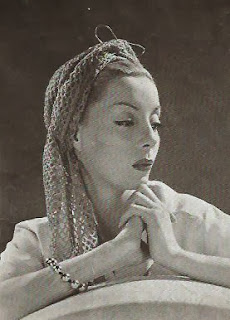On Pinterest, to which I am addicted, my favourite and most popular board is "Naughty Vintage". Once again, I'm amazed at what they did back in those days. Admittedly, a lot of the models for the predominantly French postcard trade were probably prostitutes, but the desire to flaunt one's wares seems to have been more widespread than the advertising by the ladies of the night. Here are a few of my favourites:
I love the look on her face which says "I don't give a damn what you think". And check out those fabulous boots.
This is silent movie star, Gloria Swanson, who later played possibly her most famous role as a fading silent movie star opposite William Holden in "Sunset Boulevard". Here she is before she was at all faded.
This girl doesn't look at all comfortable with this set up. I hope she was well paid.
And these lovers are really going for it. I think this is a still from a silent movie. Who knew?
Join Pinterest and check out my Naughty VIntage board. You'll be amazed, (and amused!)
http://www.pinterest.com/lajetsy/naughty-vintage/
All of this reminds me of a family mystery. My partner, Geoff, had a Great Aunt Ev, short for Elevina. She was Irish, and migrated to Australia. Geoff remembers Auntie Ev from when he was a young boy as a sour and grumpy maiden aunt, famous for putting too much pepper in the dinner. She passed away in the 1980s and left us a small amount of money, and her photo album. Imagine our surprise to find the following photos:
Here is another of Ev at the beach, a few years later by the look of it.
But here is the photo that really amazed us - Ev, sitting on the sideboard in her undies. I would guess that this photo was taken between the war years and the early 20s. Why would a young woman in those days have her photo taken in her undies, unless she was a prostitute/model or a movie star? Could this Bohemian beauty be our straight laced Auntie Ev? She was clearly comfortable with posing and modelling.
The plot thickened when we found this photo:
This is a photograph of some very famous paintings by Australian artist, Norman Lindsay, well known for his nudes and Bacchanalian scenes. Why would these feature in her album of no more than 12 photos? Was there a link between the modelling and the paintings? Could Ev have been one of his models?
I managed to identify the paintings and view good reproductions of them. The painting in the centre of the photo is actually an etching called "The Promise".
The woman in this etching bears a striking resemblance to our Ev. Lindsay finished "The Promise" in 1919, which fits well with our time frame. Here is our best and most demure portrait of Ev:
We will never know the truth, but it just seems so strange that all these portraits are here together in this very small album. There must have been a reason why these were significant.
The family legend about Ev is that she had a man, (or maybe it was a fiance?) who was killed in World War 1. Like so many other women of this era, she never married. The story goes that his loss caused her to become a bitter old woman who devoted her life to the Catholic Church and left her house to the nuns.
I can hear Ev turning in her grave and cursing us from Heaven for saying such things about her. She would have been horrified. Sorry, Ev - but it's so interesting, and impressive!






















































